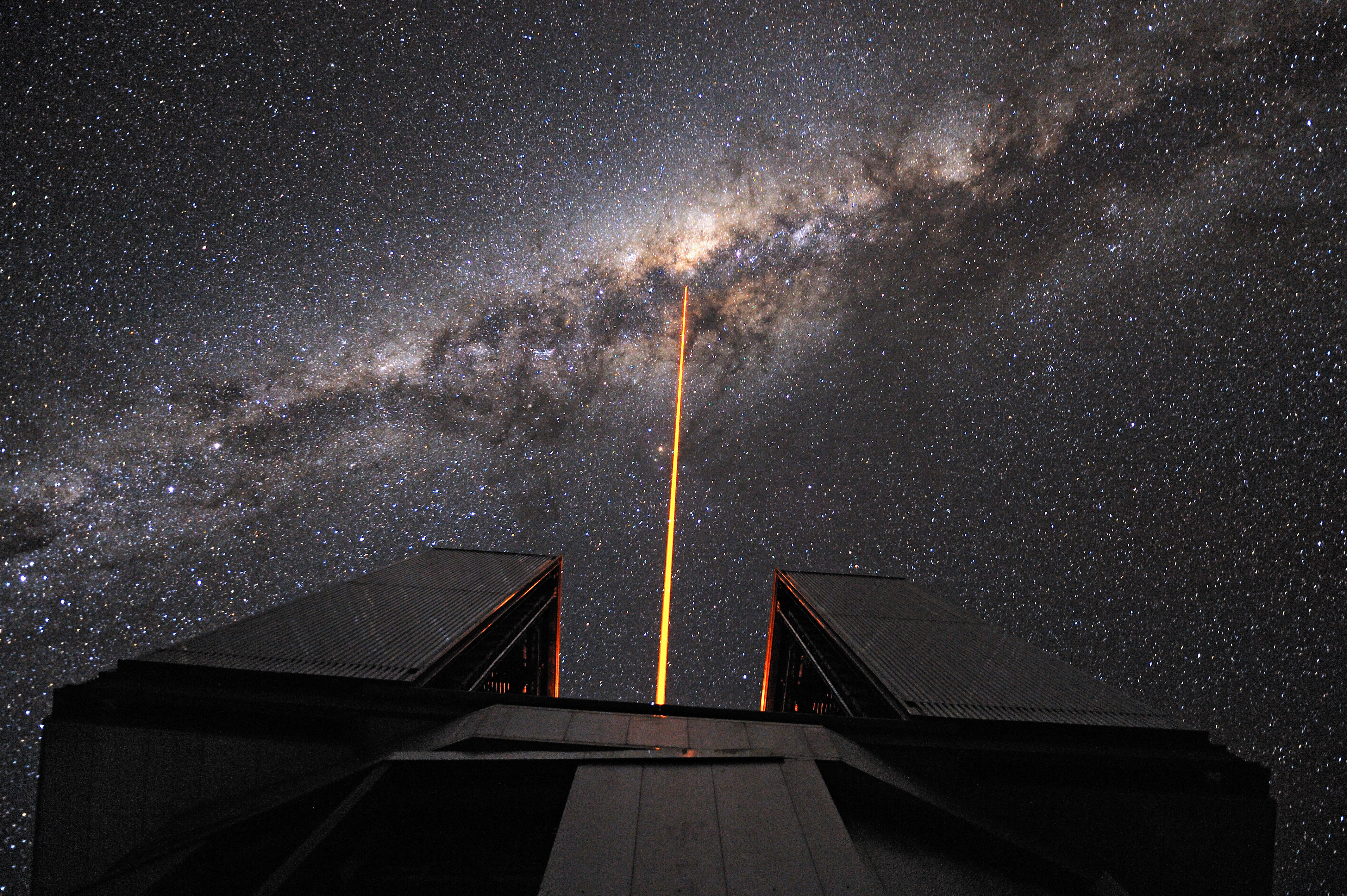
Part of the European Southern Observatory’s Very Large Telescope, this laser guide star helps astronomers correct blurry images caused by atmospheric turbulence. Photo credit: G. Hüdepohl/ESO
Telescopes like the Hubble Space Telescope have a huge advantage over ground-based telescopes — they don’t have to deal with Earth’s atmosphere. The atmosphere’s constant state of flux causes trouble for telescopes on the ground, due to its tendency to distort light traveling through it. One solution to this problem involves a technique called adaptive optics. With it, astronomers can correct blurry images and produce better pictures.
Mike Krainak, laser and electro-optics branch head at NASA’s Goddard Space Flight Center, and his team have created a custom laser crystal to assist with adaptive optics. Pending a patent, the crystal has potential applications for ground-based astronomy and laser communications ground stations.
With adaptive optics, telescopes use a tool called a guide star to correct for fluctuations in the Earth’s atmosphere. Astronomers use guide stars to deal with atmospheric aberration by measuring light distortions from the guide star and correcting for those distortions.
When natural stars aren’t bright enough, telescopes can use artificial guide stars produced with laser beams. A team of scientists and engineers from the W.M. Keck Observatory and the Lawrence Livermore National Laboratory introduced this technique in the 1990s.
When tuned precisely to the right wavelength, a sodium laser can excite sodium atoms in the upper atmosphere, causing the atoms to produce an orange-yellow glow from about 80 to 110 kilometers in altitude. “Using a telescope to look at it from directly below,” Krainak says, “it appears star-like.”
Crystals play an important role in the function of lasers — they act as a gain medium to amplify light. Krainak’s custom laser crystal is tuned specifically to allow a sodium Raman laser to function more efficiently. Adjusting the composition ratio of two elements — Yttrium and Gadolinium — within the crystal causes the laser to resonate at exactly the right wavelength for sodium atoms.
Specifically, a Raman laser allows for higher beam quality and better electrical efficiency, and the Raman crystal enables the laser to perform these functions, acting as the core of the laser.
Krainak and his team designed the crystal as part of a research and development project to construct a sodium lidar for future science missions, but the technology also has applications in laser communications, where atmospherically distorted signals affect the integrity of data being transmitted via laser beam. Just as artificial guide stars can help correct aberrations in telescope imaging, they also can help with optical communications.
“You can use an adaptive optics system to correct the distortion and focus the beam more tightly,” Krainak says.
The laser crystal could lead to more widespread use of artificial guide stars for ground-based astronomy and laser communications ground stations. Krainak and his team have published a paper about their working prototype as they await a patent.
Later this year, a new laser communications ground terminal at the Goddard Geophysical and Astronomical Observatory (GGAO) will seek to demonstrate the value and functionality of optical communications. Krainak and his team have proposed adding a sodium guide star and lidar to GGAO to further bolster the observatory’s capabilities.
To move optical technologies forward, Krainak says it will take government, industry and academia working together for the benefit of each sector and the country as a whole.
“The space program has always been associated with pushing technology forward,” Krainak adds. “It’s good to see Goddard playing an active role in cultivating knowledge and growth for the industrial base and the economy.”
